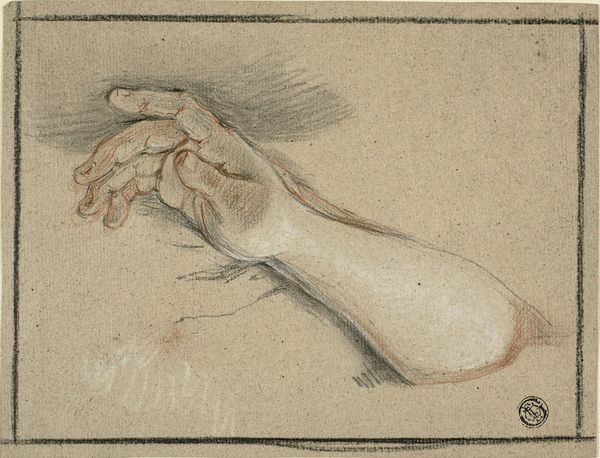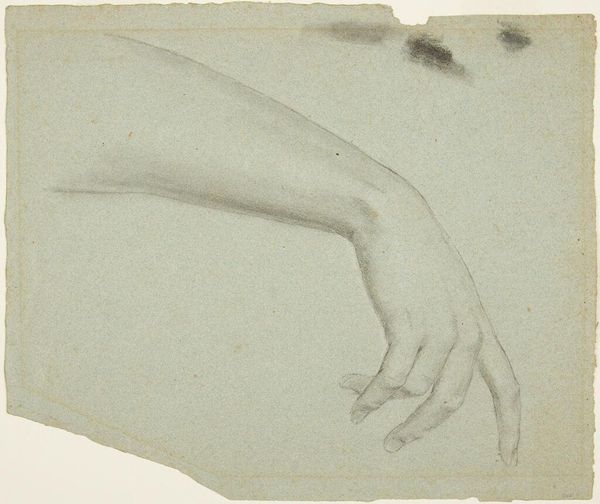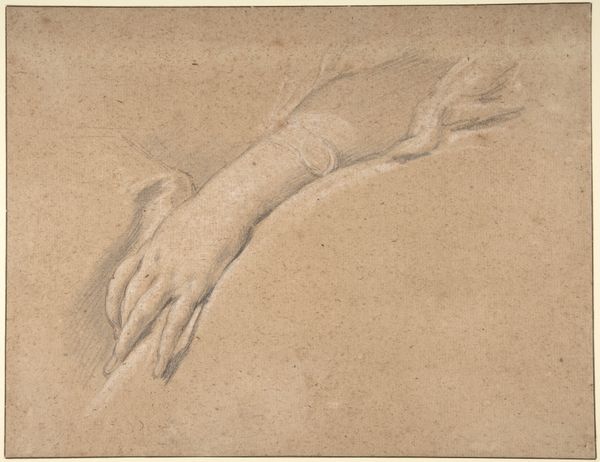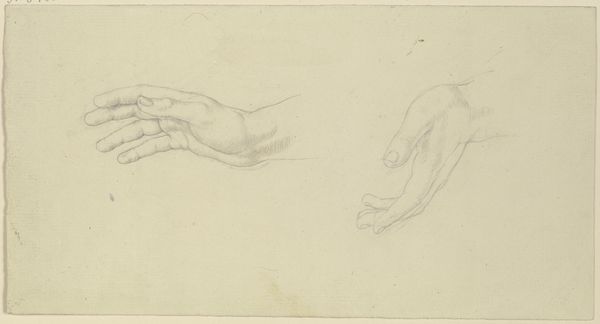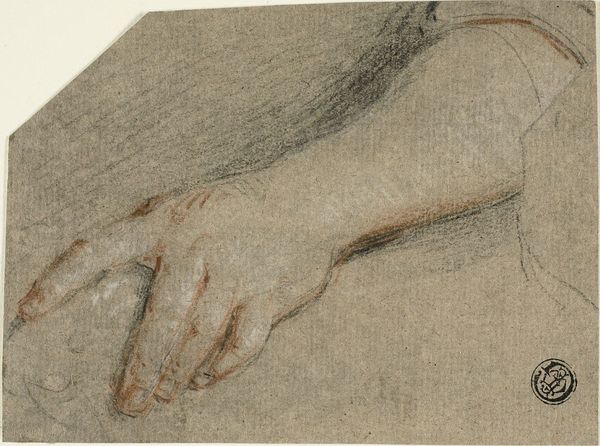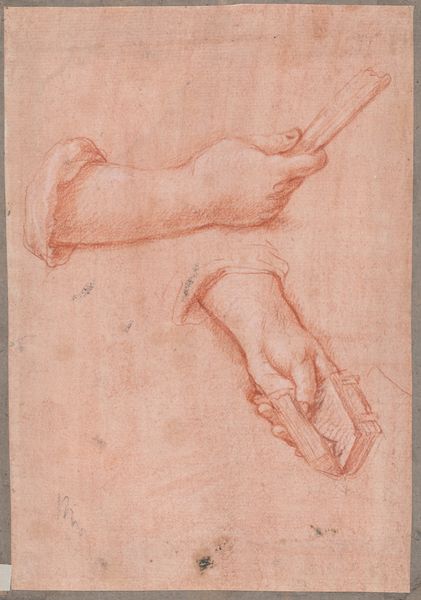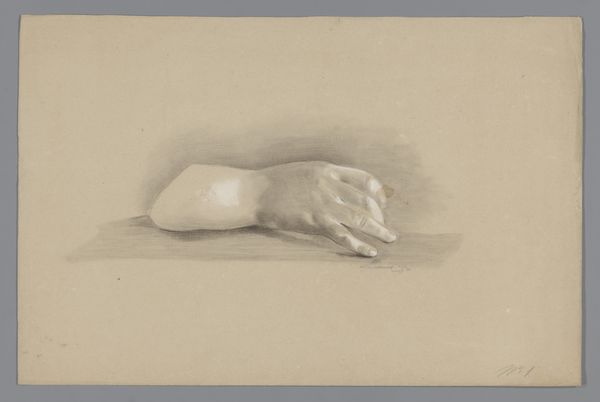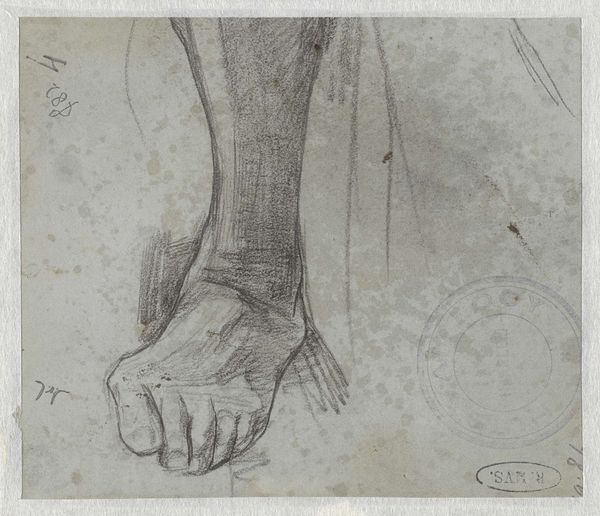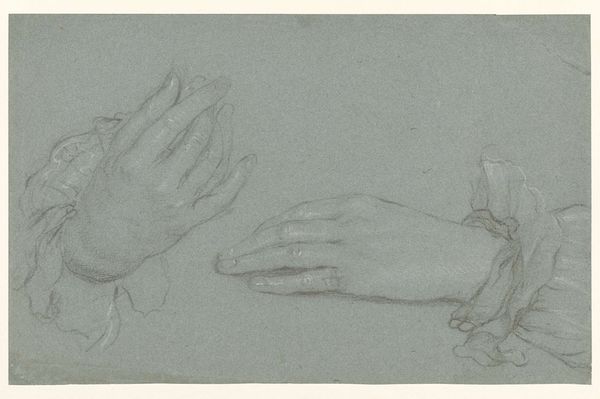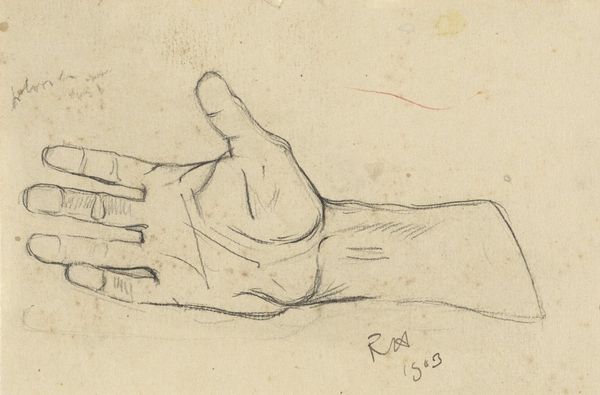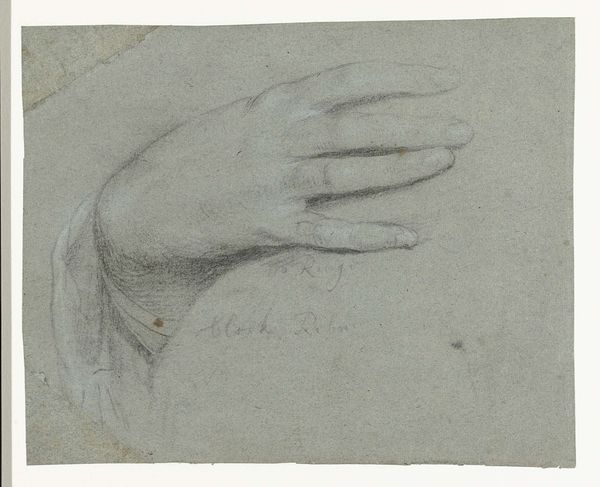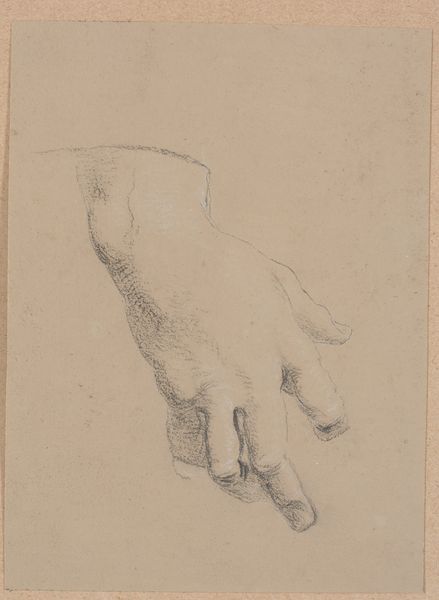
Studie: en kvindearm, hvorpå hviler en barnehånd 1625 - 1677
0:00
0:00
drawing, paper, pencil
#
drawing
#
paper
#
11_renaissance
#
pencil drawing
#
pencil
#
realism
Dimensions: 241 mm (height) x 453 mm (width) (bladmaal)
Curator: Looking at this pencil drawing, “Studie: en kvindearm, hvorpå hviler en barnehånd," created sometime between 1625 and 1677 by Heinrich Dittmers, I'm struck by its intimacy. The focus on such a specific, familial interaction—the tender placement of a child's hand in the grasp of an adult—immediately speaks to themes of care and connection. Editor: It feels inherently fragile, doesn’t it? The delicate lines of the pencil on paper emphasize the transient nature of childhood, and the protective gesture underscores the societal roles of women during that period. I wonder what stories the work and Dittmers's position tell about family dynamics of the time? Curator: Precisely! Dittmers chooses a poignant symbol. Hands, in art and iconography, are often charged with meaning, signifying power, skill, blessing, or connection. Here, the small hand held firmly but gently represents a promise, protection, and an unbroken bond—something profoundly human across centuries. Editor: It also hints at broader social conventions about parental duties, the structure of household authority, and even the value placed on children during that historical moment. Considering it resides in the Statens Museum for Kunst, Denmark, do you think the national context shapes the image's historical importance or reception in any significant ways? Curator: I would suggest so. Denmark, like many European societies of that era, had its unique customs and laws concerning families. Seeing it here allows us to consider it within Denmark's social landscape. It could serve as an intimate window into private life and prevailing beliefs around the nuclear family. Editor: The restraint and subtlety definitely contribute to its appeal and lasting relevance, suggesting the universality of human emotion and enduring concepts like protection and vulnerability regardless of cultural and temporal gaps. It makes us question how art creates and mirrors cultural memory. Curator: Absolutely. This image embodies our need to visually represent affection and safeguard the idea of a loving legacy. Editor: A testament to what survives of lived experience.
Comments
No comments
Be the first to comment and join the conversation on the ultimate creative platform.


